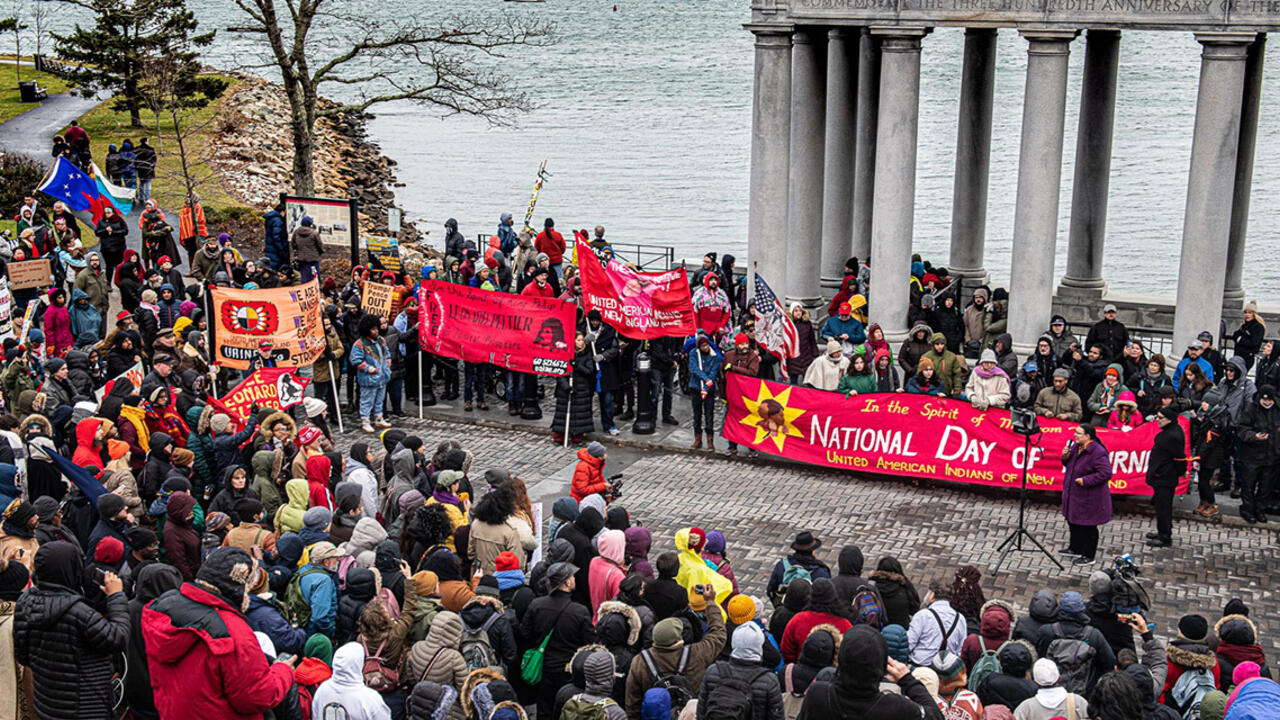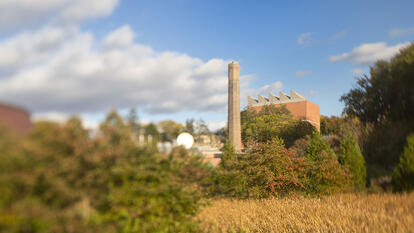The Myth of Thanksgiving and National Day of Mourning

For Kimimilasha “Kisha” James ’21, gathering with family and friends and reflecting on what they are thankful for at Thanksgiving is an important part of the holiday, but equally important is correcting a long-held myth about the origins of Thanksgiving, shining a light on the true history of the relationship between Native Americans and early settlers, and advocating for indigenous peoples across the world.
James, president of Wellesley College’s Native American Student Association and an enrolled member of the Wampanoag Tribe of Gayhead Aquinnah and Oglala Lakota, joined the hosts of Radio Boston on WBUR to discuss the 50th National Day of Mourning on November 27.
According to James, the Thanksgiving narrative taught for hundreds of years perpetuates the myth that the Pilgrims, seeking religious freedom, landed on Plymouth Rock, where the Wampanoag welcomed them with open arms, a bountiful and celebratory feast, and everyone lived happily ever after. She shared that the Pilgrims themselves weren't seeking religious freedom. Instead, they came to this land as part of a commercial venture. They also didn't land on Plymouth Rock; in fact, they didn't land in Plymouth at all, and Plymouth Rock is just a random rock that was dragged to the waterfront in Plymouth. James described that the first Thanksgiving was also not a gathering of peace: It was proclaimed in 1637 to celebrate the massacre of over 700 Pequot men, women, and children on the banks of the Mystic River in Connecticut.
“Correcting the mythology of Thanksgiving matters, because when people perpetuate the myth of the holiday, they are not only erasing the genocide of my ancestors, but also celebrating it,” James said in an email. “Thanksgiving is also a day of mourning, because it is a time when we come together to mourn the deaths of millions of our indigenous ancestors as a result of settler colonialism.”
The observance was founded by James’ grandfather, Wamsutta Frank James, and she has attended for the last 20 years, serving as a co-organizer of the event this year. “I think he would be proud that we have continued his tradition for 50 years—which is no small feat, especially when National Day of Mourning began as a very controversial, counterculture movement that a lot of people violently hated,” James told WBUR.
“I do think he would be saddened that many of the issues that were prevalent in Indian country are unfortunately still prevalent today,” she continued. “They still aren’t solved. Our suicide rates still are the highest in the nation, and they were in 1970, and our life expectancy is still lower than all other races in America, and that was the same in 1970. And our education levels are still the lowest in the nation … so I think he would be a little dismayed that we haven’t made more progress as a society, but I do think he would be proud that we have continued National Day of Mourning.”
James had some advice for marking the Thanksgiving holiday in the future: She said that people should learn about the true history of Thanksgiving and educate themselves to understand why the myth is so harmful. She said people also should advocate for a more inclusive curriculum on Native American issues in schools.
In addition, James shared that she is actively advocating for indigenous communities on a number of related issues, “including Missing and Murdered Indigenous Women (MMIW), pipelines and environmental destruction, the detention of children at the border by ICE, the murder of indigenous people in Brazil, and the ongoing protests at Mauna Kea.” James also had a leading role this past year developing a petition urging Wellesley to recognize Indigenous People’s Day instead of Columbus Day. This change was recently ratified by students in College Government and the faculty at Academic Council.
Photo: The 50th National Day of Mourning demonstration included a gathering in front of the National Monument to the Forefathers in Plymouth, Massachusetts.



